Search results for "2010/02/2011/04/matti-suurpaa-parnasso-1951–2011-parnasso-1951–2011"
Best foot forward
14 May 2010 | This 'n' that
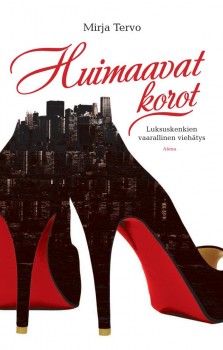 C’est moi. Tribute. Eliza. Muse. Monica. Very Privé, Super Private.
C’est moi. Tribute. Eliza. Muse. Monica. Very Privé, Super Private.
These are names of shoes that women buy in luxury shops on New York’s Fifth Avenue. Six inches or more of heels that cost anything between 500 and 5,000 dollars, make walking torture; but pain is tolerated, as along with the shoes a woman acquires a deeply satisfying feeling of being envied, beautiful and sexy (her toe cleavage has to be clearly visible).
Mirja Tervo (born 1971) is an ethnologist who spent a year and a half selling luxury shoes in Manhattan. Among her fellow sales personnel were a medical doctor, a musician, an actor and a retired baseball pro.
The shoe salon paid no salary, just commission of ten per cent, and the required minimum sale per week was 3,500 dollars. If a sales person failed to sell merchandise worth this sum, he or she was given a loan of 300 dollars, payable immediately when the results improved, and they quickly had to. More…
Itämeren tulevaisuus [The future of the Baltic Sea]
17 February 2011 | Mini reviews, Reviews
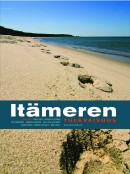 Itämeren tulevaisuus
Itämeren tulevaisuus
[The future of the Baltic Sea]
Contributors: Saara Bäck, Markku Ollikainen, Erik Bonsdorff, Annukka Eriksson, Eeva-Liisa Hallanaro, Sakari Kuikka, Markku Viitasalo, Mari Walls
Helsinki: Gaudeamus, 2010. 350 p., ill.
ISBN 978-952-459-132-6
€ 39, paperback
This publication covers the key environmental issues affecting the Baltic Sea and provides new perspectives on those issues. The Baltic, with its relatively small, shallow dimensions and low salinity, is one of only a few seas in the world that is home to both freshwater and saltwater fish species and inland and marine birds. The Kvarken Archipelago in the Gulf of Bothnia was granted UNESCO World Heritage Site status in 2006. There are some 85 million people living within range of the environmentally sensitive, heavily trafficked Baltic Sea in nine countries around its coastline and its drainage basin. Serious environmental alarm bells began to ring in the 1960s with the realisation that the white-tailed eagle was on the brink of extinction. The socio-political history of the Baltic has had an effect on its protection, since the border between two competing economic systems – communism and capitalism – ran right through it. The articles in this book make it clear that science has identified ways to protect the Baltic Sea, but these research findings are not being put into practice in official decision-making.
Translated by Ruth Urbom
Elina Hirvonen: Kauimpana kuolemasta [Furthest from death]
30 September 2010 | Mini reviews, Reviews
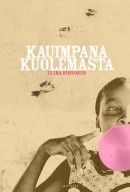 Kauimpana kuolemasta
Kauimpana kuolemasta
[Furthest from death]
Helsinki: Avain, 2010. 240 p.
ISBN 978-952-5524-81-9
€ 30, hardback
Elina Hirvonen (born 1975) came to international attention with her first novel, Että hän muistaisi saman (English translation: When I forgot). With Kauimpana kuolemasta she shows that her success was well deserved: she has both talent and originality, and also courage linked with a sense of form. This book belongs to the genre of Finnish novels set at the interface between two countries, a device that in some hands can become a facile dramaturgical trick for the creation of contrasts. The interweaving of human stories from Finland with stories from Zambia sets all the alarm bells ringing, but the encounter between Paul and Esther, two sad people who lack a secure homeland, vibrates with emotion-charged scenes. Paul is the son of Finnish overseas aid workers, Esther is an outcast from her Zambian village, in flight from one hell to the next. Slowly Paul and Esther are brought together and the reader hovers in uncertainty as to whether their paths will ever cross. The two characters see and experience violence as they journey towards pain, but Elina Hirvonen’s sensual and life-affirming language conveys the realisation that hope is – sometimes – stronger than death.
Funny stuff favoured
13 April 2011 | In the news
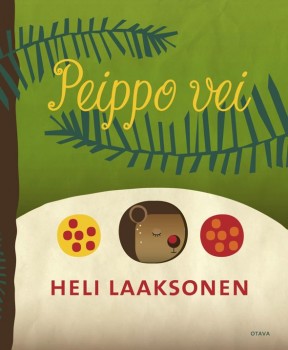 In March the Bookseller’s Association of Finland’s list of the best-selling Finnish fiction was topped – for a change – by a collection of poems. Like all her collections, Heli Laaksonen’s Peippo vei (‘The chaffinch took it’, Otava) is written in a local dialect spoken in south-western Finland.
In March the Bookseller’s Association of Finland’s list of the best-selling Finnish fiction was topped – for a change – by a collection of poems. Like all her collections, Heli Laaksonen’s Peippo vei (‘The chaffinch took it’, Otava) is written in a local dialect spoken in south-western Finland.
Perttti Jarla’s latest comics book, Fingerpori 4 (‘Fingerborg 4’, Arktinen Banaani) was number two – and, demonstrating the Finns’ love of cartoons and comics, another of his titles, Fingerpori book, Fingerpori – Kamppailuni (‘Fingerborg – My fight’) occupied fourth place, following Sofi Oksanen’s Puhdistus (Purge), published in 2008 and still number three on the list. More…
Maarit Knuuttila: Kauha ja kynä. Keittokirjojen kulttuurihistoriaa [The ladle and the pen. The cultural history of the cookbook]
24 September 2010 | Mini reviews, Reviews
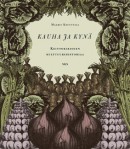 Kauha ja kynä. Keittokirjojen kulttuurihistoriaa
Kauha ja kynä. Keittokirjojen kulttuurihistoriaa
[The ladle and the pen. The cultural history of the cookbook]
Helsinki: SKS (The Finnish Literature Society), 2010. 207 p., ill.
ISBN 978-952-222-187-2
€ 26, hardback
This book by ethnologist Maarit Knuuttila describes the history of European cookbooks, recipes and cooking. Knuuttila familiarises the reader with the earliest documents relating to the preparation of food, which were written by the ancient Greeks and Romans, but of which only a few have been preserved. Instead of haute cuisine the book concentrates on the authors and users of basic Finnish cookery books, and examines how those books reflect the times in which they were written, as well as their significance for women. While the literary high culture of gastronomy has been produced mainly by men, the everyday dishes represented in the basic cookbooks are the work of women. The author discusses the changes in perceptions of the ideal home and health, as well as the ways in which Finnish cookery, housekeeping and food culture have altered during the past hundred years.
Timo Kalevi Forss & Martti Lintunen: Karjala edestakaisin [Karelia back and forth]
3 August 2011 | Mini reviews, Reviews
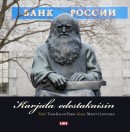 Karjala edestakaisin
Karjala edestakaisin
[Karelia back and forth]
Teksti [Text by]: Timo Kalevi Forss
Kuvat [Photographs by]: Martti Lintunen
Helsinki: Like Kustannus, 2010. 164 p., ill.
ISBN 978-952-01-0504-4
€ 29, paperback
At the end of the Continuation War (1941–44), some 400,000 Karelians were forced to abandon their homes. They were resettled in various parts of Finland, and nowadays around a fifth of Finns have some Karelian heritage. Through interviews with fifteen people living in the modern-day region of Karelia, this book documents the part of Karelia that was ceded to the Soviet Union. The researchers travelled to Vyborg, Sortavala, Priozersk, and the Valaam Monastery. The interviewees include a construction company owner building a house on an old Finnish stone foundation, a rock music club owner from Vyborg and a colonel who served in the counter-terrorism division of the Russian army. The photographs convey the range of buildings in Karelia, from Finnish houses to traditional Karelian homesteads, from mansions of the nouveaux riches to Soviet-era tower blocks. In the idyllic villages around Lake Ladoga, cows graze near small houses; time seems to have been frozen around the turn of the last century. The long sandy beaches of the spa towns on the shores of the Gulf of Finland are now filled with tourists from St Petersburg.
Translated by Ruth Urbom
I am me
30 September 2010 | Fiction, Prose
Extracts from the novel Poikakirja (‘The boy’s own book’, Otava, 2010). Introduction by Mervi Kantokorpi
It’s a small day in spring. Another name for the lark is the skylark. You can only see them sometimes, and even then they’re so high up in the sky that they swoop like fast-moving dots.
The kitchen windowpane is rippling with stripes. The window has a bottom, and at the bottom there is some cotton wool and two opened matchboxes, a blue Sampo and a picture of an army chaplain in his uniform and insignia. As spring has progressed the cotton wool at the bottom has turned into wet blobs and the matches will never light again, as they’ve sucked up the winter frost from the glass.
Most children are made at home but not us, says Eini during walking practice. Outi shoves her, tells her to be quiet and walk in rhythm. I’m behind the table reading the Children’s Encyclopaedia, but I watch them. With every second step, their bottoms swing to the right and then to the left.
Mum comes into th the kitchen and asks what they’re doing; Anna-Liisa responds on the twins’ behalf, says they’re practising walking like in the movies and that’s why they’re wiggling their hips. More…
Sodan haavoittama lapsuus [A childhood scarred by war]
11 August 2011 | Mini reviews, Reviews
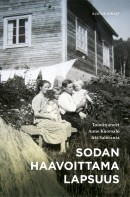 Sodan haavoittama lapsuus
Sodan haavoittama lapsuus
[A childhood scarred by war]
Toimittaneet [Edited by]: Anne Kuorsalo & Iris Saloranta
Helsinki: Gummerus, 2010. 288 p., ill.
ISBN 978-951-20-8107-3
€ 34, hardback
Around 1.5 million Finns were children during the Winter and Continuation Wars of 1939–1944. Three hundred children are estimated to have been killed by bombs, and between 55,000 and 80,000 were orphaned by the war. Many more deaths were caused by diseases such as tuberculosis, polio and cerebral meningitis. Some children lived fairly secure lives on farms with their own families or with relatives; some were sent to live with foster families in Sweden; some were evacuated from Karelia and a small number were interned in camps because of their German heritage. Many under-18s served in the Finnish military and would now be considered child soldiers. Finns who were born in the 1930s and early 1940s have long been a neglected group: for several decades, discussions of the victims of war were avoided for foreign policy reasons as well. It is only in recent years that discussions have emerged concerning the fates of the children who were sent to Sweden during the war and those who were born to Finnish women, fathered by German soldiers. This book includes the stories of thirty people. The views of some refugees who have settled in Finland are included as well, such as the story of Mahmoud, who fled from Iraq via people smugglers.
Translated by Ruth Urbom
The 2013 European Union Prizes for Literature
3 October 2013 | In the news
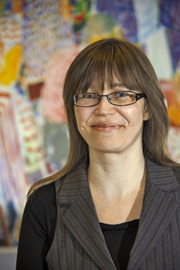
Katri Lipson. Photo: Olli Turunen
The second novel Jäätelökauppias (‘The ice-cream vendor’, Tammi, 2012) by Katri Lipson won her one of the 12 European Union Prizes for Literature this year, announced at the Gothenburg Book Fair, Sweden, on 26 September.
Each winner will receive € 5,000, and the priority to apply for European Union funding to have their book translated into other European languages.
The European Commission, the European Booksellers’ Federation (EBF), the European Writers’ Council (EWC) and the Federation of European Publishers (FEP) are the organisers of the prize which is supported through the European Union’s culture programme. The competition is open to authors in the 37 countries involved in the Culture Programme.
The prize aims to draw attention to new talents and to promote the publication of their books in different countries, as well as celebrating European cultural diversity.
The previous Finnish winner of the prize was Riku Korhonen in 2010.
Valta Suomessa [Power in Finland]
5 August 2010 | Mini reviews, Reviews
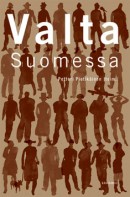 Valta Suomessa
Valta Suomessa
[Power in Finland]
Toim. [Ed. by] Petteri Pietikäinen
Helsinki: Gaudeamus, 2010. 287 p., ill.
ISBN 978-952-495-143-2
33 €, paperback
The authors have been involved in the Academy of Finland’s ‘Power and society in Finland’ research programme, which supports the multidisciplinary study of the historical impact that changes in Finnish society have on its power structures and on those who exert power in Finland. Among the changes are Finland’s accession to the European Union and the internationalisation of corporate and business life. Major power management and policy decisions have often been made without extensive public debate. The articles include studies of the historical changes in economic history and women’s status; other subjects include the conflicts between the forestry industry and nature conservationists; energy policy and the relatively low level of opposition to nuclear power among Finns, labour relations and the opportunities that citizens have to influence media content.
Arne Nevanlinna: Hjalmar
5 November 2010 | Mini reviews, Reviews
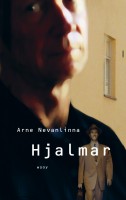 Hjalmar
Hjalmar
Helsinki: WSOY, 2010. 294 p.
ISBN 978-951-0-36700-1
€29, hardback
‘Jansson!’ Hjalmar, the protagonist of Arne Nevanlinna’s second novel, is repeatedly woken by voices barking his surname at him. The people shouting at him are primary school teachers, commanding officers, nurses, psychiatrists and his bosses; these figures collectively serve as a sort of Orwellian ‘Big Brother’ figure, or Hjalmar’s social superego. At the core is penniless bohemian office drone Hjalmar’s relationship to his boss, Börje, who personifies the archetype of the Finnish banker, both idolised and loathed. Hjalmar eventually rises up from his lowly position into the opposition, aided by several picaresque characters and his own ‘pokeresque’ skills as a gambler. Arne Nevanlinna (born 1925), an architect and essayist, began writing fiction late in his career: his first novel, Marie (2008), was a runaway success. It tells of a lady from the cream of Strasbourg society who had been married off to Finland and lived in isolation to the age of a hundred. Hjalmar does not quite match its predecessor in terms of quality, but the elegance of old patrician clans persists in its enjoyable irony.
Elina Vuola: Jumalainen nainen. Neitsyt Mariaa etsimässä [The divine woman. In search of the Virgin Mary]
1 April 2011 | Mini reviews, Reviews
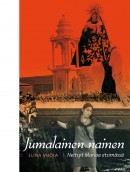 Jumalainen nainen. Neitsyt Mariaa etsimässä
Jumalainen nainen. Neitsyt Mariaa etsimässä
[The divine woman. In search of the Virgin Mary]
Helsinki: Otava, 2010. 220 p., ill.
ISBN 978-951-1-22364-1
€ 34, hardback
This book is about the Virgin Mary and in particular her role in women’s religious experience. Theologian Elina Vuola considers that the doctrines concerning the Virgin Mary have quite a lot in common, as the principal dogmas were formulated in the early centuries of Christianity. As a partial explanation of the difference between the Mary of the Church and the Mary of popular faith, the author adduces the fact that with few exceptions women in Finland did not begin to receive theological training until the second half of the twentieth century. The central question in the book is whether or not Mary is the crowned queen of a patriarchal religious faith that is hostile to women, a harmful role model. Vuola avows herself to be a representative of the trend in women’s religious studies that takes a more positive and multifaceted view of Mary. In the section devoted to the Mary of Karelian folk religion it becomes evident that in Finland and its surrounding regions there are interpretations that are surprisingly similar to those found in Latin America.
Translated by David McDuff
Stories in the stone
2 December 2010 | Extracts, Non-fiction
Extracts from Jägarens leende. Resor in hällkonstens rymd (‘Smile of the hunter. Travels in the space of rock art’, Söderströms, 2010)
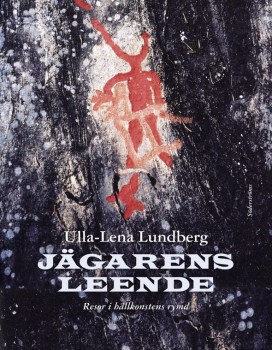 ‘Why do some people choose to expend what is often a great deal of effort hammering images in the bedrock itself, while others conjure up, in the blink of an eye, brilliantly radiant pictures on a rock-face that was empty yesterday but is now peopled by mythological animals, spirits and shamans?
‘Why do some people choose to expend what is often a great deal of effort hammering images in the bedrock itself, while others conjure up, in the blink of an eye, brilliantly radiant pictures on a rock-face that was empty yesterday but is now peopled by mythological animals, spirits and shamans?
‘I think about this often – I who love painting but who still chose a career that involves me sitting and hammering away, day in and day out, like a true rock-carver,’ writes author and ethnologist Ulla-Lena Lundberg in her new book on the art of the primeval man
When the children of Israel went into Babylonian captivity, hanging up their harps on the willow-trees and weeping as they remembered Zion, my sister and I were already sitting by the rivers of Babylon. We knew how they felt. Our father was dead and we had been sent away from our home. We sat there clinging to each other, or rather I was the one clinging to Gunilla, and she had to try to rouse herself and find something for us to do, to give us something else to think about. More…
Juha Seppälä: Takla Makan
22 April 2010 | Mini reviews, Reviews
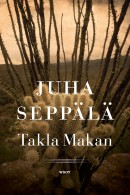 Takla Makan
Takla Makan
Helsinki: WSOY, 2010. 149 p.
ISBN 978-951-0-36322-5
€ 27, hardback
Author Juha Seppälä’s manner of portraying the world is often characterised as harsh and desolate, and this certainly applies to this, his twentieth work. ‘Jesus’ mother was a woman,’ declares the first-person narrator in ‘Ristin tie’ (‘The path of Christ’) in the second novella in Takla Makan. This true but erotically charged statement sums up the themes of the two texts that make up the work. As the narrator of that story bears the cross in an Easter procession, issues of life and death, faith and worldliness, spirit and flesh, masculinity and femininity, are all present. The man carrying the cross, who has recently lost his job, has taken on a greater burden to bear. The other novella in this book, which takes its title from the name of a desert in China, tells of a terminally ill man who has withdrawn to a small rural community and lets his life slowly slip away. In Seppälä’s narratives anguished men are thrown into the world to ponder the big issues of life and death, expressing themselves with admirably precise sentences stripped of everything inessential.
Outsider art protected
31 August 2012 | This 'n' that
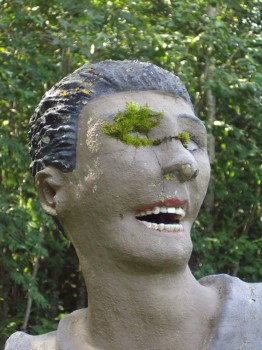
Moss lady: one of the 500 statues
Papermill worker Veijo Rönkkönen (1944–2010) lived all his life on a small, isolated farm in Parikkala, eastern Finland, close to the Russian border. In the 1960s he started sculpting statues in his free time which he placed in the garden around his house. The expanding statue park – take a look at the pictures! – was always open to visitors for free.
When the artist died, the Parikkala authorities were not willing to invest money in acquiring the garden and the park, a unique ‘total work of art’. Fortunately, it was bought by a businessman, Reino Uusitalo, founder of the Pyroll paper and cardboard company. An association now manages the park – and entry is still free. Rönkkönen’s outsider art continuously attracts nearly 30,000 visitors a year.
Over a period of fifty years, Rönkkönen created five hundred human and animal figures made of concrete. Living in his house in the middle of his garden, the artist avoided any contact with the thousands of people who came to wander in his extraordinary open-air gallery.
Now, thanks to Uusitalo’s generosity and the work of the association, the garden will keep growing – and the statues grow lichen and moss, ageing naturally.
![]()
Photographer and writer Veli Granö introduced the life and works of this self-made artist in his book Veijo Rönkkösen todellinen elämä / The real life of Veijo Rönkkönen (Maahenki, 2007): see Books from Finland‘s extract.
